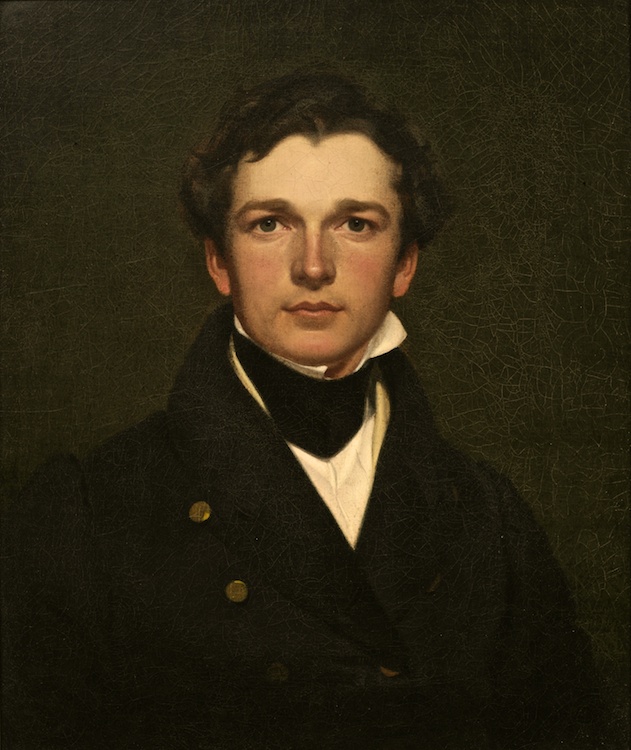
In my last blog I looked at the early life of William Sidney Mount, hailed as the first American genre artist. I looked at his love for music and how he depicted song and dance in his paintings. Today I want to carry on with his life story and take a look at his early works and his portraiture.
William had been working for his brother, Henry Smith Mount, at his sign writing business in Setauket and enjoyed it. At first he found the work interesting and challenging but later found the painting of signs somewhat restrictive. He gave up working for his brother and moved to New York to live with his uncle Micah Hawkins, who operated a tavern and grocery store in New York City. His uncle was also a composer, playwright, and poet. Micah combined music and storytelling into his theatrical productions which often delved into what was happening in politics and much of these ideas were to influence his nephew and his paintings.
It was also around this time that William Mount visited his first art gallery, the American Academy in New York and in 1826 he enrolled at the newly opened National Academy of Design, an artistic establishment founded by a number of young painters such as Asher Durand, Thomas Cole, and Samuel Morse. In those early years William Mount’s art was all about portraits and historical scenes. William remained at the Academy for a year before returning home.
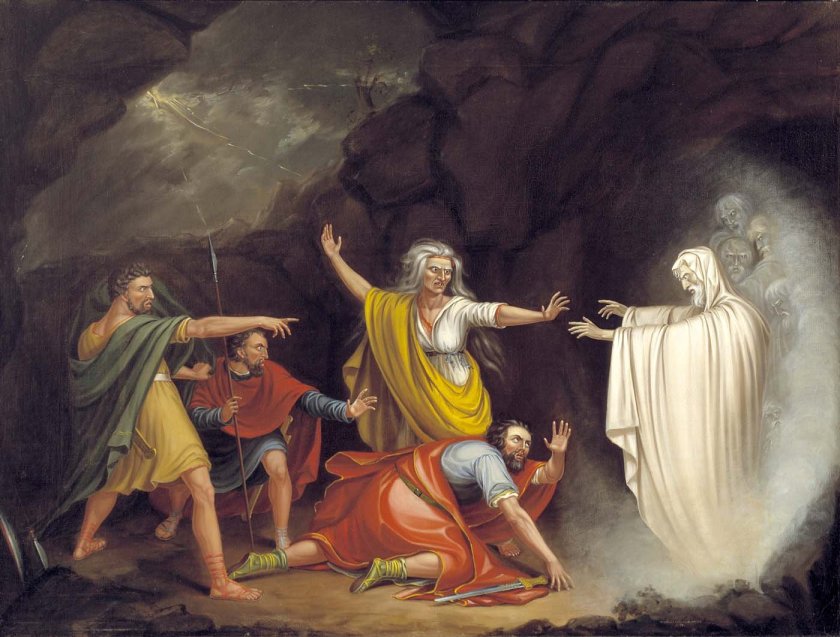
One of his early works was entitled Saul and the Witch of Endor, which he completed in 1828 and can now be found in the Smithsonian American Art Museum in Washington. The painting depicts a passage from the Old Testament book of Samuel which tells of Saul and his battle with the Philistines.
“… The Philistines assembled and came and set up camp at Shunem, while Saul gathered all Israel and set up camp at Gilboa. When Saul saw the Philistine army, he was afraid; terror filled his heart. He inquired of the Lord, but the Lord did not answer him by dreams or Urim or prophets. Saul then said to his attendants, “Find me a woman who is a medium, so I may go and inquire of her.
‘There is one in Endor,’ they said…”
Saul seeks help from the oracle from Endor prior to him going into battle with the Philistines. She summons the spirit of the prophet Samuel so that Saul could ask for his guidance. In the painting we see Saul and his three companions cower in fear as the ghostly apparition approaches them.
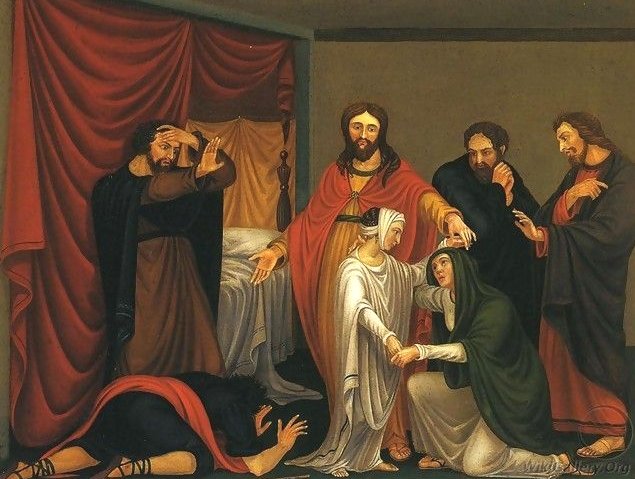
In that same year he produced another biblical work based on Matthew’s Gospel (Matthew 9:23-26). It was entitled Raising of Jairus’ Daughter. The subject of this biblical work had been depicted many times before by great artists such as Veronese. The bible relates the story:
“…When Jesus entered the synagogue leader’s house and saw the noisy crowd and people playing pipes, he said, “Go away. The girl is not dead but asleep.” But they laughed at him After the crowd had been put outside, he went in and took the girl by the hand, and she got up. News of this spread through all that region…”
William’s brother Henry was so impressed with the finished painting that he persuaded his brother to submit it at the annual National Academy exhibition. It was well praised by the Academy professors. William was now living at his brother’s place on Nassau Street, Lower Manhatten and had a studio in the attic. He enjoyed painting historical and biblical works but the sales of which were not bringing in enough money so he reverted to portraiture which was always a guaranteed way of raising income.
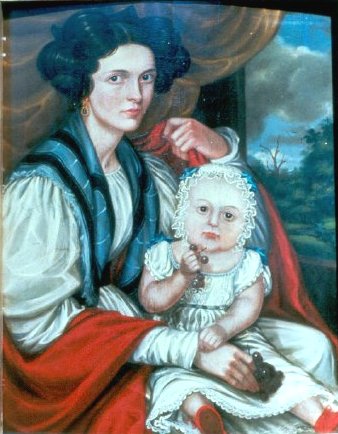
One of his early works of portraiture was a family portrait entitled Ruth Hawkins Mount Seabury and Son Charles Edward, which he completed in 1828. It depicts his nineteen year old sister Ruth Hawkins Mount and her infant son Charles Edward Seabury, the first of her seven children.
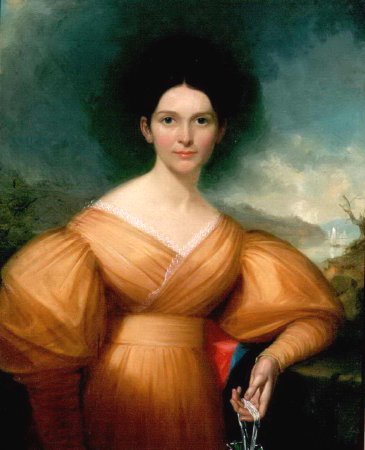
William Mount completed a portrait of his sister, Ruth in 1831.
I suppose if you are looking for people to sit for you for a portrait, you turn firstly to your family and in 1828 he completed a portrait of his eldest brother, and his former employer, Henry Smith Mount.
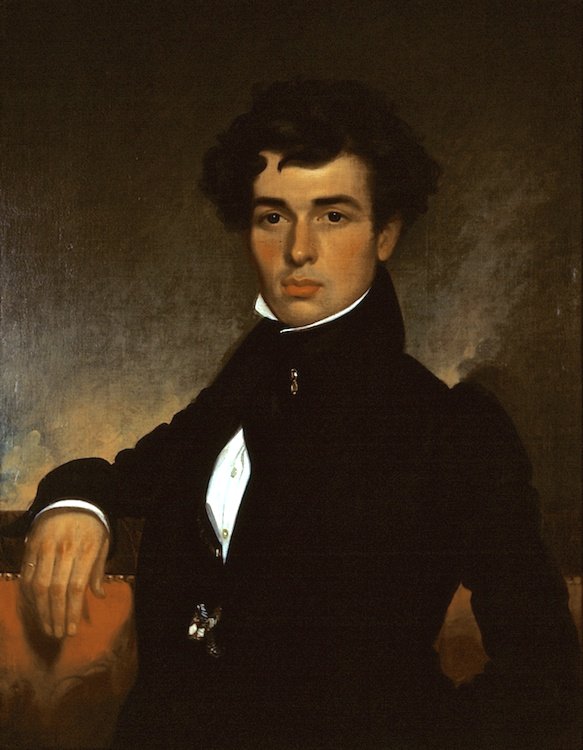
Three years later, in 1831, Henry Smith Mount was the subject of another of his younger brother’s portraits. This portrait of his eldest brother (by five years) is a masterful portrait. He has depicted his brother as a man of great self-confidence, a man who comes across as a thoughtful academic and yet, a man who by his facial expression, seems stern and somewhat menacing, as he stares out at us, lost in his own thoughts.
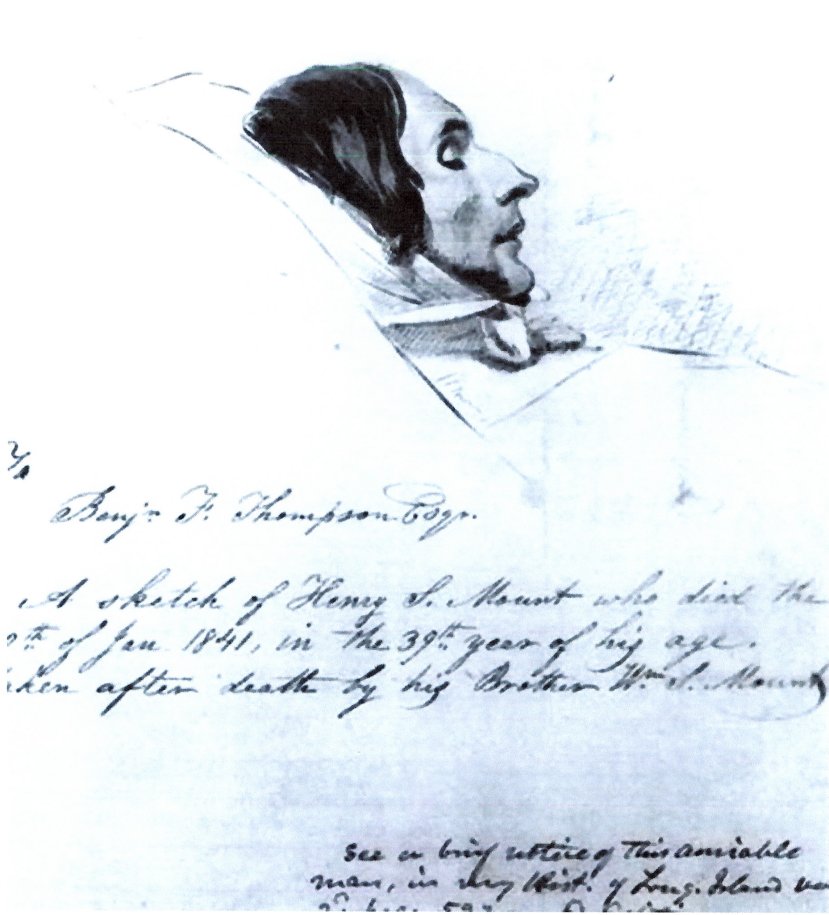
Thirteen years on he completed another depiction of his brother, Henry. The circumstances surrounding this watercolour were much sadder as this was completed in January 1841 and the setting was Henry’s deathbed. Henry was just thirty nine years of age.
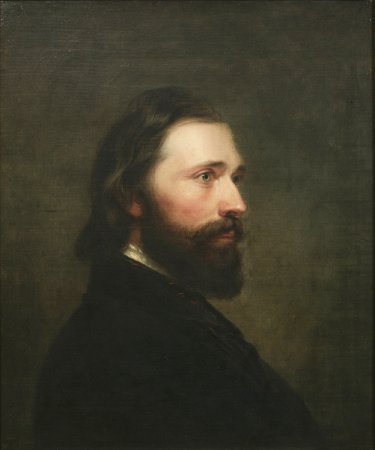
In 1847 William Mount painted a portrait of his other brother, Shepherd Alonzo Mount.
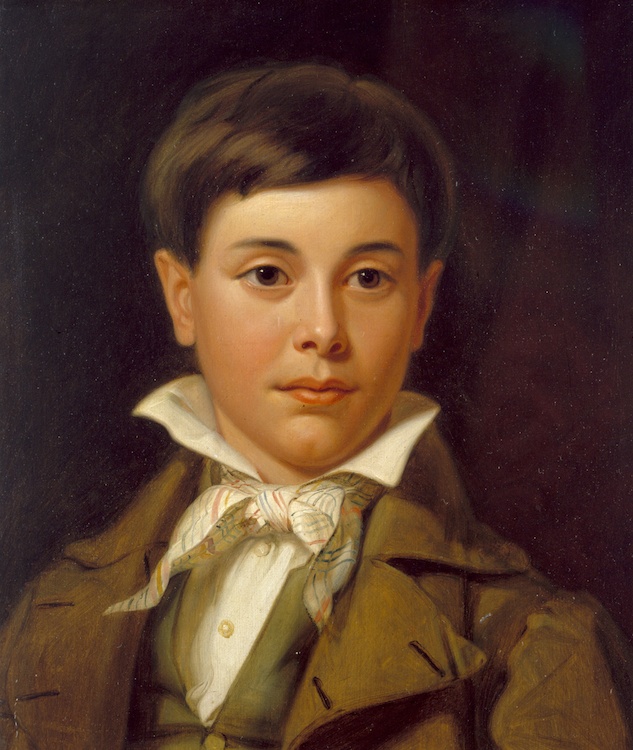
The next example of William Mount’s portraiture is one he completed in 1837 and was entitled Portrait of Jedediah Williamson. It is a depiction of a ten year old boy commissioned by his family. It is a full frontal depiction of the young lad and Mount has carefully and with great skill portrayed the boy’s facial features. It is a very peaceful depiction of the boy as he looks out into the distance. The family would have been very pleased to have received the work from Mount and it is recorded that they paid him fifteen dollars for the painting. However there is a sad twist to this portrayal as this is a “mourning painting” or as Mount referred to them, “a painting after death”. The boy had died and this portrait was in honour of him and may have given the family a modicum of comfort during the sadness of their great loss. These “mourning paintings” were very popular at the time and artists found they could achieve a steady income from paintings which, for relatives, served as a reminder of a loved one who had passed away. One should remember that between 1861 and 1865 over 350,000 Americans died during the American Civil War, the families of many just had an artist’s painting to remind them of their lost son or daughter.
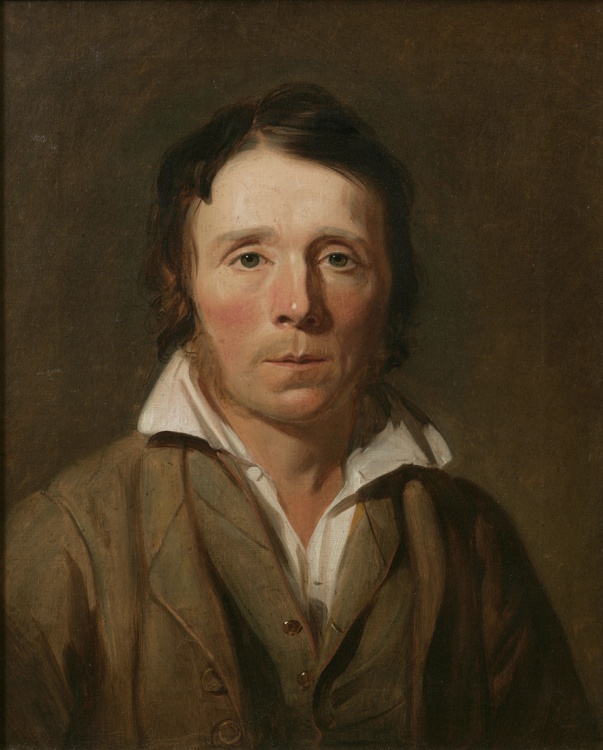
Another interesting portrait by William Mount was one entitled Portrait of Reuben Merrill. It was one of Mount’s early works which he completed in 1832. The question, which is yet to be resolved, is who is Reuben? Some believe he was a gardener whilst others say he was a simple field worker on the farm owned by William’s sister, Ruth and her husband, Charles Saltonstall Seabury. The fact that he identity of the sitter used by Mount is somewhat of a mystery is not uncommon as a number of the sitters in Mount’s portraits are unknown. There is warmth about how Mount has depicted this man. His face is weather beaten from all the outside work but he has compassionate eyes, which leads us to believe that although he was just a poor and simple labourer, there was some sort of warm connection between him and the artist which probably testifies to the fact that he was a hard worker and appreciated by his employers.
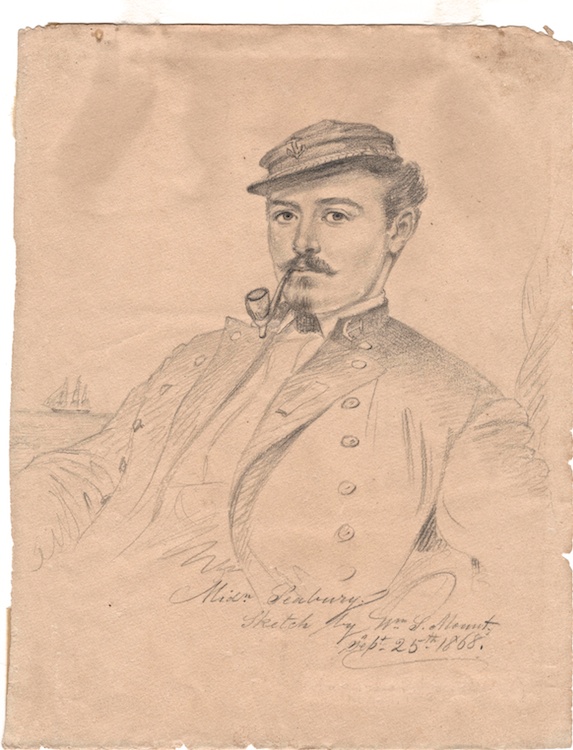
My last example of Mount’s portraiture was also thought to have been his last artistic work. It was completed in September 1868, less than two months before Mount’s death, and was a pencil sketch of his nineteen year old nephew Samuel Seabury. Samuel was one of seven children. His mother was Ruth Hawkins Mount Seabury, William Sidney Mount’s younger sister, and his father was Charles Saltonhall Seabury. At the time of the portrait, Samuel Seabury was a midshipman in the navy, and the ship in the left hand background is a reminder of his profession.
In my next blog I will take my final look at William Sidney Mount and his work and I will feature some of his excellent non-musical genre work.

Interesting expression on his face. Maybe he is looking for his favorite art?
🙂
I love your blog…<3